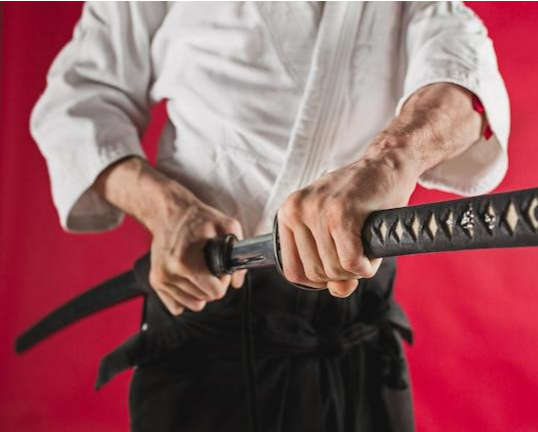
Why the Tanto Was More Than Just a Backup Weapon for Samurai?
The samurai are widely recognized for their katana—a sword synonymous with honor, mastery, and the way of the warrior. But fewer people know about the tanto, often perceived as merely a backup weapon. Yet, the tanto played a much more dynamic and multifaceted role in samurai culture. This compact blade was not only a practical tool but also a symbol of artistry, status, and tradition.
If you’ve always thought of the tanto as “just another knife,” this post will challenge that notion. We’ll explore its practical applications, distinctive craftsmanship, and ceremonial significance. You’ll also learn how to identify a quality tanto that reflects Japan’s rich tradition of swordmaking.
The Practical Role of the Tanto in Samurai Life
While the katana is celebrated for its versatility and effectiveness in combat, the tanto had its own crucial role—especially in close-quarters situations where a longer blade could prove impractical.
A Weapon for Close Combat
The tanto’s compact size, typically ranging between six to twelve inches, made it a highly effective close-combat weapon. Often concealed within robes or armor, it could be drawn quickly when the wielder needed a swift, defensive response. For samurai, this blade was indispensable in tightly constrained environments, such as inside castles or narrow streets, where a katana would have been unwieldy.
Historical accounts suggest that the tanto was not merely a last resort but often the primary choice in assassinations or duels where surprise and precision were key. Its short, razor-sharp blade could strike vital points with deadly efficiency, especially in the hands of a highly skilled samurai accustomed to iaijutsu—techniques focused on drawing and striking in one motion.
Utility Beyond Combat
While the tanto’s primary purpose was as a weapon, it also had a variety of practical applications in daily samurai life. The blade was often used to cut rope, carve wood, or even perform delicate rituals. Some tanto were specifically designed with specialized tasks in mind, such as gutting fish or preparing food, making them versatile tools as well as weapons.
The tanto also served as a tool of ritual suicide or seppuku, a practice deeply tied to samurai honor. When a samurai chose to end their life to preserve their dignity or atone for a perceived failure, the tanto was the instrument traditionally employed, underscoring its deeply personal significance.
The Artistry and Craftsmanship Behind the Tanto
The tanto was not just a working weapon—it was a work of art. The exceptional craftsmanship behind these blades elevated them into objects of reverence and legacy, reflecting the skill and creativity of their makers.
Forging a Tanto with Precision
Traditional tanto were forged using the same techniques as larger swords like the katana. Japanese swordsmiths would layer and fold steel multiple times to remove impurities and create a blade that was both durable and flexible. This process, called tamahagane forging, gave tantō their renowned sharpness and resilience.
A tanto’s shape often varied, with the most common designs being the hira-zukuri (flat-ground) and shobu-zukuri (iris leaf). Each design carried unique structural and aesthetic qualities, reflecting the preferences of the commission or the era in which it was crafted. For instance, tanto produced in the Kamakura period (1185–1333) were often larger and more robust, mirroring the martial needs of the time.
Intricate Details and Aesthetic Beauty
What distinguished the tanto as an art piece were the intricate details added by craftsmen. Blades were often polished to reveal unique hamon (temper lines), which displayed the smith’s skill. Handles and scabbards, meanwhile, were frequently adorned with elaborate carvings, lacquer finishes, and inlays of precious metals or exotic materials.
These embellishments were not merely decorative—they told stories and symbolized virtues such as courage, loyalty, and perseverance. A tanto might bear engravings of dragons or cherry blossoms, motifs infused with cultural and spiritual significance.
These details made quality tanto highly sought-after not only as possessions but as gifts. They were often presented to lords, warriors, or even religious institutions, further emphasizing their value beyond mere utility.
The Ceremonial and Symbolic Importance of the Tanto
Much like the katana, the tanto held symbolic weight in samurai society. Far from being overlooked, it was integral to various ceremonies and reflected a samurai’s personal values.
A Symbol of Status and Identity
Owning a Japanese tanto signified a connection to Japan’s martial tradition and culture. Women of samurai families, for example, often carried a type of tanto called a kaiken. This small dagger symbolized both self-defense and their role as protectors of their family’s honor. Carrying a kaiken during weddings was particularly significant, symbolizing the bride’s commitment to her family’s legacy.
Men, on the other hand, might wear a tanto as a sign of rank and readiness, especially during courtly events or meetings with fellow warriors. The beauty and craftsmanship of the tanto served as a reflection of an individual’s status and taste.
Rituals and Legacy
The tanto also appeared in moments of great introspection or solemnity, particularly in martial and religious contexts. For example, in the Buddhist practice of dedicating swords to temples, tanto were often chosen for their intimate size and intricate craftsmanship.
Many families passed down tanto as heirlooms, preserving not only the blade itself but the values and stories attached to it. Receiving a tanto as a gift—or placing one in the hands of a future generation—was a profound acknowledgment of trust, respect, and honor.
How to Select a Quality Tanto Today
Whether you’re an enthusiast, collector, or practitioner of martial arts, selecting a tanto today requires a keen eye for authenticity and craftsmanship. Here’s what to look for:
1. Understanding Authentic Characteristics
- Blade Material: Look for tamahagane steel or modern equivalents crafted using traditional techniques.
- Hamon Pattern: Authentic tanto feature unique temper lines created during forging.
- Blade Shape: Traditional shapes like hira-zukuri indicate historical authenticity.
2. Assessing the Craftsmanship
- Detailed Fittings (Koshirae): Genuine tanto often display intricate handle and scabbard work using materials like ray skin or lacquer.
- Signature Marks (Mei): Original tanto often bear the smith’s signature inscribed on the tang. Beware of replicas that inaccurately mimic this feature.
3. Aligning with Tradition
Authenticity is not just about aesthetics but also about aligning with the values of Japanese martial craftsmanship. Look for tanto crafted by reputable modern swordsmiths or antique dealers specializing in Japanese blades.
Preserving the Legacy of the Tanto
The tanto was far more than just a backup weapon for the samurai. It was a trusted tool, a work of art, and a profound cultural symbol. Its legacy endures not only in historical accounts but in the hands of collectors, enthusiasts, and martial artists who recognize its enduring value.



